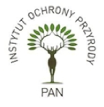- Search in all Repository
- Literature and maps
- Archeology
- Mills database
- Natural sciences
Advanced search
Advanced search
Advanced search
Advanced search
Advanced search

Object
Title: Cytochrome P-450 metabolites in renal circulation and excretion-interaction with the nitric oxide (NO) system
Contributor:
Publisher:
Place of publishing:
Type of object:
Abstract:
The role of CYP-450 dependent arachidonic acid (AA) metabolites (vasoconstrictor 20-HETE and vasodilator EETs) and NO in control of blood pressure (MABP) and kidney function remains unclear. NO affects the activity of heme-containing enzymes, like CYP-450 related monooxygenases, moreover, their activity depends on Na(+) intake. The focus of this review and underlying studies is on the role of high sodium intake (pro-hypertensive factor) in interrelation between CYP-450 and NOS. The acute vs. chronic non-selective inhibition of CYP-450 AA metabolites (ABT), and selective inhibition of 20-HETE (HET 0016) has also been tested. The renal artery flow (RBF, Transonic probe), medullary blood flow (MBF, laser-Doppler flux), renal excretion, and medullary tissue NO (selective electrode) were measured in male anaesthetized Wistar rats. We conclude that on standard Na(+) intake, opposed effects of 20-HETE and EETs are almost in equilibrium; however, in the renal circulation the vasodilator EETs influence slightly prevails. High sodium intake stimulates NOS, which limits CYP-450 impact on MABP and kidney function. However, this protection disappears after prolonged sodium intake. Long-lasting high sodium intake lowers NO bioavailability and promotes systemic and intrarenal vasoconstrictor activity of 20-HETE. Opposed effects of NO and AA metabolites of CYP-450 on water and solute excretion are also described.
Relation:
Journal of Physiology and Pharmacology
Volume:
Issue:
Start page:
End page:
Detailed Resource Type:
Format:
Resource Identifier:
Language:
Language of abstract:
Rights:
Terms of use:
Digitizing institution:
Mossakowski Medical Research Institute PAS
Original in:
Library of the Mossakowski Medical Research Institute PAS
Projects co-financed by:
Programme Innovative Economy, 2010-2014, Priority Axis 2. R&D infrastructure
Access:
Object collections:
- Digital Repository of Scientific Institutes > Partners' collections > Mossakowski Medical Research Institute PAS > Publications of the Institute employees
- Digital Repository of Scientific Institutes > Literature > Journals/Articles
Last modified:
Mar 24, 2022
In our library since:
Dec 16, 2015
Number of object content downloads / hits:
25
All available object's versions:
https://rcin.org.pl./publication/77869
Show description in RDF format:
Show description in RDFa format:
Show description in OAI-PMH format:
Objects Similar
Sporkova, Alexandra Jichova, Sarka Huskova, Zuzanna Koopkan, Libor Nishiyama, Akira Hwang, Sung H. Hammock, Bruce D Imig, John D Kompanowska-Jezierska, Elżbieta Sadowski, Janusz Kramer, Herbert J Cervenka, Ludek
Walkowska, Agnieszka Badzyńska, Bożena Kompanowska-Jezierska, Elżbieta Johns, EJ Sadowski, Janusz
Kuczeriszka, Marta Dobrowolski, Leszek Walkowska, Agnieszka Sadowski, Janusz Kompanowska-Jezierska, Elżbieta
Walkowska, Agnieszka Kuczeriszka, Marta Sadowski, Janusz Olszyński, Krzysztof Hubert Dobrowolski, Leszek Cervenka, Ludek Hammock, BD Kompanowska-Jezierska, Elżbieta
Kompanowska-Jezierska, Elżbieta
Kompanowska-Jezierska, Elżbieta
Kuczeriszka, Marta
Certikova-Chabova, Vera Vernerova, Zdenka Kujal, Peter Huskova, Zdenka Skaroupkova, Petra Tesal, Vladimir Kramer, Hubert J. Kompanowska-Jezierska, Elżbieta Walkowska, Agnieszka Sadowski, Janusz Cervenka, Ludek Vaneckova, Ivana

 INSTYTUT ARCHEOLOGII I ETNOLOGII POLSKIEJ AKADEMII NAUK
INSTYTUT ARCHEOLOGII I ETNOLOGII POLSKIEJ AKADEMII NAUK
 INSTYTUT BADAŃ LITERACKICH POLSKIEJ AKADEMII NAUK
INSTYTUT BADAŃ LITERACKICH POLSKIEJ AKADEMII NAUK
 INSTYTUT BADAWCZY LEŚNICTWA
INSTYTUT BADAWCZY LEŚNICTWA
 INSTYTUT BIOLOGII DOŚWIADCZALNEJ IM. MARCELEGO NENCKIEGO POLSKIEJ AKADEMII NAUK
INSTYTUT BIOLOGII DOŚWIADCZALNEJ IM. MARCELEGO NENCKIEGO POLSKIEJ AKADEMII NAUK
 INSTYTUT BIOLOGII SSAKÓW POLSKIEJ AKADEMII NAUK
INSTYTUT BIOLOGII SSAKÓW POLSKIEJ AKADEMII NAUK
 INSTYTUT CHEMII FIZYCZNEJ PAN
INSTYTUT CHEMII FIZYCZNEJ PAN
 INSTYTUT CHEMII ORGANICZNEJ PAN
INSTYTUT CHEMII ORGANICZNEJ PAN
 INSTYTUT FILOZOFII I SOCJOLOGII PAN
INSTYTUT FILOZOFII I SOCJOLOGII PAN
 INSTYTUT GEOGRAFII I PRZESTRZENNEGO ZAGOSPODAROWANIA PAN
INSTYTUT GEOGRAFII I PRZESTRZENNEGO ZAGOSPODAROWANIA PAN
 INSTYTUT HISTORII im. TADEUSZA MANTEUFFLA POLSKIEJ AKADEMII NAUK
INSTYTUT HISTORII im. TADEUSZA MANTEUFFLA POLSKIEJ AKADEMII NAUK
 INSTYTUT JĘZYKA POLSKIEGO POLSKIEJ AKADEMII NAUK
INSTYTUT JĘZYKA POLSKIEGO POLSKIEJ AKADEMII NAUK
 INSTYTUT MATEMATYCZNY PAN
INSTYTUT MATEMATYCZNY PAN
 INSTYTUT MEDYCYNY DOŚWIADCZALNEJ I KLINICZNEJ IM.MIROSŁAWA MOSSAKOWSKIEGO POLSKIEJ AKADEMII NAUK
INSTYTUT MEDYCYNY DOŚWIADCZALNEJ I KLINICZNEJ IM.MIROSŁAWA MOSSAKOWSKIEGO POLSKIEJ AKADEMII NAUK
 INSTYTUT PODSTAWOWYCH PROBLEMÓW TECHNIKI PAN
INSTYTUT PODSTAWOWYCH PROBLEMÓW TECHNIKI PAN
 INSTYTUT SLAWISTYKI PAN
INSTYTUT SLAWISTYKI PAN
 SIEĆ BADAWCZA ŁUKASIEWICZ - INSTYTUT TECHNOLOGII MATERIAŁÓW ELEKTRONICZNYCH
SIEĆ BADAWCZA ŁUKASIEWICZ - INSTYTUT TECHNOLOGII MATERIAŁÓW ELEKTRONICZNYCH
 MUZEUM I INSTYTUT ZOOLOGII POLSKIEJ AKADEMII NAUK
MUZEUM I INSTYTUT ZOOLOGII POLSKIEJ AKADEMII NAUK
 INSTYTUT BADAŃ SYSTEMOWYCH PAN
INSTYTUT BADAŃ SYSTEMOWYCH PAN
 INSTYTUT BOTANIKI IM. WŁADYSŁAWA SZAFERA POLSKIEJ AKADEMII NAUK
INSTYTUT BOTANIKI IM. WŁADYSŁAWA SZAFERA POLSKIEJ AKADEMII NAUK



































